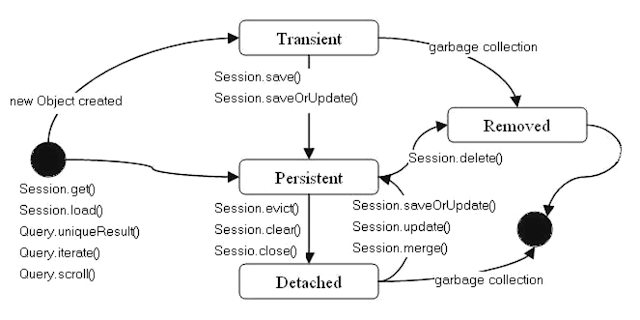Save vs. saveOrUpdate vs. persist in Hibernate
Hibernate Session class provides a couple of ways to save an object into the database by methods like save, saveOrUpdate, and persist. You can use either save(), saveOrUpdate() or persist() based upon your requirement for persisting objects into the database. The key thing is that all these objects are used to store data into the database but they also make a transient object persistent in Hibernate.
Along with Spring framework Interview questions, Hibernate questions are also quite popular on Java interviews because of its status as leading ORM. It's good to prepare some questions from Hibernate before appearing in any J2EE interviews.
Difference between save and saveOrUpdate in Hibernate
The main difference between save and saveOrUpdate method is that save() generates a new identifier and INSERT record into the database while saveOrUpdate can either INSERT or UPDATE based upon the existence of a record. Clearly, saveOrUpdate is more flexible in terms of use but it involves extra processing to find out whether a record already exists in the table or not.
In summary, the save() method saves records into the database by INSERT SQL query, Generates a new identifier, and returns the Serializable identifier back.
On the other hand saveOrUpdate() method either INSERT or UPDATE based upon the existence of an object in the database. If a persistence object already exists in the database then UPDATE SQL will execute, and if there is no corresponding object in the database, then INSERT will run.
Difference between save and persist method in Hibernate
1)The first difference between save and persist is there return type. Similar to save method, persist also INSERT records into the database, but return type of persist is void while return type of save is Serializable Object.
2) Another difference between persist and save is that both methods make a transient instance persistent. However, persist() method doesn't guarantee that the identifier value will be assigned to the persistent instance immediately, the assignment might happen at flush time.
This diagram also explains the life-cycle of a persistence object in Hibernate and how it moves from one state to another like Transient to Persistent to Detached. You can see that both save() and saveOrUpdate() method move an object from Transient to Persistent state.
4) The fourth difference between save and persist method in Hibernate is related to previous differences in save vs. persist. Because of its above behavior of persist method outside transaction boundary, it's useful in long-running conversations with an extended Session context. On the other hand, the save method is not good in a long-running conversation with an extended Session context.
These were some differences between save, saveOrUpdate, and persist method of Hibernate. All three methods are related to saving Objects into a database, but their behavior is quite different. Knowledge of save, persist and saveOrUpdate not only helps to decide better use of Hibernate API but also help you to do well in Hibernate interviews.





0 comments:
Post a Comment